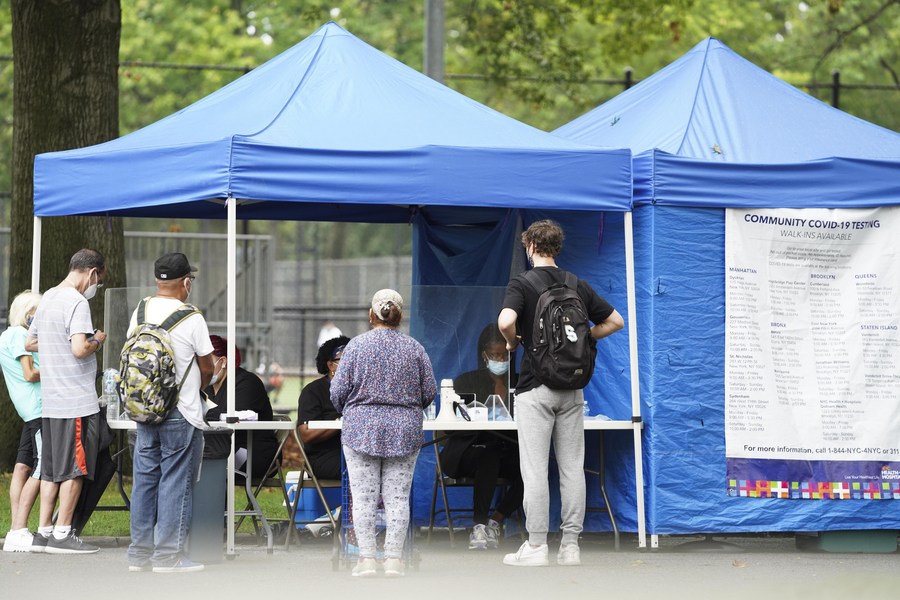U.S. CDC changes virus testing guidelines as deaths pass 180,000
The U.S. has registered over 5.8 million COVID-19 infections and more than 180,000 deaths so far – both the highest in the world. Several U.S. Midwest states reported record one-day increases in the number of new coronavirus cases on Thursday as officials braced for the possibility of another surge with school openings.
Iowa, Minnesota, North Dakota and South Dakota all recorded their biggest one-day increases in new infections since the pandemic started.
Nationally, metrics on new cases, deaths, hospitalizations and test positivity rates are all declining but there are emerging hotspots in the Midwest.
North Dakota, where cases rose 30% last week, reported a record 333 new cases on Thursday. Neighboring South Dakota, where cases rose by 50 percent last week, reported a record 623 new infections.
Infections have been rising since an annual motorcycle rally in Sturgis, South Dakota drew more than 365,000 people from all over the country from August 7 to 16. The South Dakota health department said 40 cases have been traced to the Sturgis rally.
Iowa reported 1,288 new cases on Thursday after seeing infections rise by nearly 7 percent last week. Minnesota reported 1,154 new cases and saw its new cases rise by 4 percent last week, according to a Reuters analysis. Cases are also rising in Illinois.
Minnesota's health department said 265 of the new cases were due to delayed test results from one lab and the backlog would affect future reports as well.
Health experts have warned there could be another surge in cases across the United States as schools reopen and colder weather forces more gatherings indoors.

Change in U.S. CDC testing guidelines sparks controversy
Meanwhile, the U.S. Centers for Disease Control and Prevention (CDC) has changed its COVID-19 testing guidelines, no longer recommending testing for most people without symptoms, which has sparked controversy as experts warn it may hamper the timely identification of asymptomatic individuals with COVID-19.
That is a stark change from the previous CDC guidance, which emphasized the importance of testing people who were in close contact with infected people.
The governors of several states said they would not reduce testing as recommended by the CDC, a change many health officials say was based on political pressure and not science.
Arizona, California, Connecticut, Florida, Illinois, Texas, New Jersey and New York all plan to continue to test asymptomatic people who have been exposed to COVID-19.
New York Governor Andrew Cuomo said the state of New York would not be abiding by the new guidance and challenged the assertion that politics played no role in the change.
"This 180-degree reversal of COVID-19 testing guidelines is reckless, and not based on science and has the potential to do long-term damage to the (CDC's) reputation," Cuomo said in a joint statement, along with the governors of New Jersey and Connecticut, who also said their states would not be following the CDC's guidance.
CNN and The New York Times reported on Wednesday that U.S. public health officials were ordered by high-level members of the Trump administration to push forward with the changes.
Globally, many countries advocate early testing. The World Health Organization on Thursday said that resources permitting, people exposed to the novel coronavirus should be tested even if they do not show immediate symptoms of infection.
European governments have used broad testing and isolation to control the virus. France, for instance, recommends that anyone who thinks they need a test should get one and in Germany, people with close contact of 15 minutes or more with a person with COVID-19 are advised to have a test.



























No comments:
Post a Comment